Robert Scheer: Filmmakers Look at the Myths of Racism
On KCRW's "Scheer Intelligence" podcast, Sabaah Folayan and Damon Davis dispel the notion that racism was isolated in the South.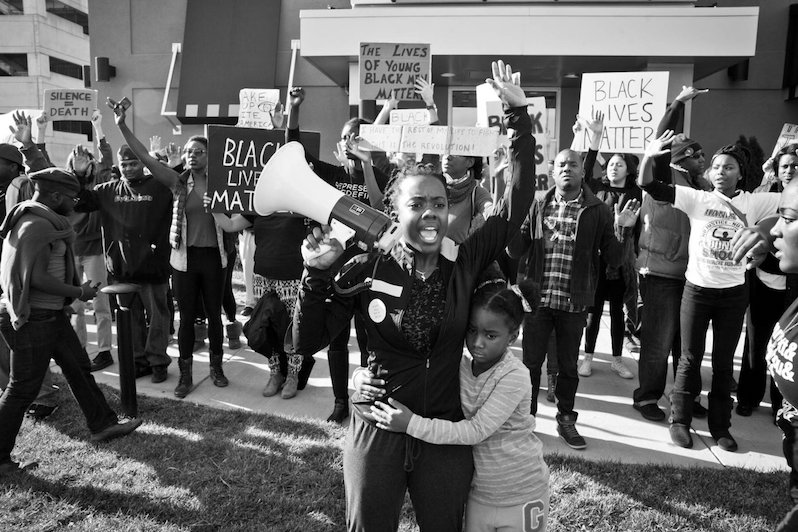 Still image from "Whose Streets?" (IMDb)
Still image from "Whose Streets?" (IMDb)
Listen to the full podcast below (via KCRW):
RS: Hi, it’s Robert Scheer with another edition of Scheer Intelligence, where the intelligence comes from my guests. In this case, two young filmmakers who have a great success on their hands, the movie Whose Streets, which premiered to great acclaim at Sundance and is rolling out now in mid-August. And it’s directed by Sabaah Folayan and Damon Davis. It’s about Ferguson, and we think we know a lot about it; there’s a line in the documentary that got my attention, when someone says: Ferguson is the new Mississippi, or Missouri is the new Mississippi. And the idea being that the situation that’s described in Ferguson was so stark, it brings you back to the segregated South. And I want to build a question on that, taking St. Louis–and I thought to myself, what do I know about St. Louis? Well, I happened to have one been a St. Louis Cardinal fan, and they beat the Red Sox in the 1946 World Series. And they were the most Southern team in major league baseball. And the hero of that game was Enos Slaughter, affectionately thought of as a sort of redneck fellow. And when Jackie Robinson came in in ‘47, the guy who’d been the hero deliberately spiked Jackie Robinson going around first base. And it was a reminder that St. Louis was a border, and Missouri was a border state, and that segregation, and the spirit of segregation, was very much alive there. Is that reflected in Ferguson, or are we dealing with a modern city that has all the old problems?
DD: Just so we’re clear, Ferguson is a suburb of St. Louis. I was born and raised in East St. Louis, which is also, I guess you would call it a suburb of St. Louis. So I’ve been in St. Louis every year of my life, and I can definitely attest to the segregation that is still very, very prevalent in St. Louis. I think it’s 91 or 99 municipalities in North County, that was a result of white flight. And people, even in the city, where I live at, things are very, just very segregated and very closed off. And like you said, like St. Louis, Missouri is a border state, and I guess I feel like it’s the South from where I come from; and it just, maybe it’s the top of the South, it’s the Mason-Dixon line. But those, all of those, those values, are maybe not directly expressed in the language, but they still hold true. And a lot of those institutions and those ideas are still in control of what goes on there.
RS: So let me ask you, going off that. The film has been celebrated, correctly I think, for being–well, people use the word “raw”; it’s unvarnished, it’s a very, a clear statement of you know, “We have nothing to lose but our chains,” which is chanted. And what is the overwhelming takeaway from this documentary that you want out there?
SF: I want to go back a little bit to the question that you asked before. I would just add that from my perspective, I think the answer is both St. Louis is absolutely kind of the remnant of the Southern culture of kind of proud, American nationalism and anti-blackness; but it also is absolutely a modern city. It’s absolutely, you know, it’s always been a center of industry; it continues to house some of the biggest businesses in the United States. And I think the myth here is that racism was isolated in the South. I live in Crown Heights, Brooklyn, and you know, New York City is one of the most diverse cities in the country, if not in the world, and yet as the demographic in my neighborhood changes and I see more white people moving in, I notice that even though we are living in the same neighborhood, we’re not walking into the same stores; we’re not speaking when we walk down the street. And so I think it’s important to understand that racism is really deeply embedded in American society all over. Ferguson is an example of something that has happened very starkly in the South, but something that has happened all over the country since its inception, really. And what I want people to take away from this film is, I really want for those of us who are on the receiving end of systematic oppression to understand that we can find dignity in resistance. A lot of times, it feels like there’s a choice between buying into the status quo in order to be secure and successful and, you know, being pro-black, or being Afrocentric, or being militant, and those things are often stigmatized. And so we wanted to make a film to break down that stigma and show that there are many different kinds of people who participate in protest; you can have a career, you can have a family, and you can still be involved. And you know, to show the joy and the love and the sense of freedom that you can have when you are engaged and when you are standing up for yourself and standing up for the people around you.
RS: But isn’t there a more depressing message here that unfortunately does correspond to reality, which is the St. Louis of the postwar period–or California of the postwar period, the whole country–there was a migration of blacks from the South that had been underway for some decades. There were jobs that paid, there were jobs that were unionized as the unions ended segregation of their own, particularly in the auto industry and longshore and other activities, steel and what have you. And that there were jobs. And the picture that emerges from Ferguson in your movie, Whose Streets, is one of despair. Economic despair. Yes, you have a nurse who’s a single mother who’s struggling, and she’s finding strength in activism. But there are also the people who say: We have lousy schools, and there aren’t jobs. And is this a depiction of what the society now regards as a throwaway population? –that we have not just in St. Louis; we obviously have it in Oakland and Los Angeles, and as you say, Crown Heights and what have you. Is that not really the harsh message of this documentary?
SF: Yeah, I do think that is a huge part of the message, is the fact that through this kind of willful neglect, black communities across the country are being forced to try to survive and try to participate without having any of the resources, the education, the tools, you know, that government administrations really should provide to all citizens. And it is this real kind of apartheid situation, where America is the leader of the free world, but infant mortality, and hunger and poverty, and employment and education, in so many metrics we rank below nations that we would call Second and Third World countries. So I absolutely do think this film was intended to also be sort of a canary in the coal mine about, you know, this idea, this American dream is really not what it’s cracked up to be. And I think the fact that Trump was elected–you know, we premiered this film at Sundance on the day of Donald Trump’s inauguration, and it was just this kind of really strange, full-circle moment where everything that we had been screaming at the top of our lungs had come true. And still I think the progressive, white, or you know, middle-class or comfortable segment of the population is not ready to believe us when we talk about how much racial animus motivates our political direction.
RS: That’s Sabaah Folayan–and I’m going to mangle the name, as I often do, not intentionally–and Damon Davis, the directors of this really terrifically provocative and important film. Now, but you’re from California. And in California, again, I go back to my analogy, there was a time when California was a place where people came to, black people from the South and so forth, and there were good jobs, and there were opportunities and so forth. Now the black population has declined in California, and it hasn’t been a great success story in places like Oakland or Los Angeles or what have you. And again, I get back to this notion of the throwaway population. Is there really any interest in offering other than prison, other than occupation, other than, you know, law enforcement to this community? Has the society basically turned its back on opportunity, on education for a very large segment of the black population?
SF: Yes, unfortunately I think that everything you described is absolutely true. I’m 26 years old, and I grew up in South Central LA, not Silverlake, not Echo Park, as it now looks. And so I wasn’t fortunate enough to see that time where it looked like potential. When I grew up, I went 45 minutes to go to a private school, and there was a very stark reality between what was going on, you know, when you go down Crenshaw Boulevard and what happens when you go north of Wilshire. So I absolutely think that’s true, and that’s why we say that this film, we made this for black people, we made this for people who lived through this, because it’s been hundreds of years of this, and it doesn’t seem like white people have empathy for what we’re going through. It seems like white people have really fully convinced themselves of this myth that we’re fundamentally different, and at every opportunity, they use that as an excuse for these conditions. So I believe that it’s really going to take us–and I’m not talking about in a “pull up your bootstraps and don’t challenge the system” kind of way; I’m talking about really building leverage, building power, working together, figuring out ways to substitute what the society in this country has shown that it will refuse to provide for us.
RS: Yeah, that is a powerful message of this film, but it’s–you know, kind of a despairing message. And I think it’s not just the rejection of white people, but you actually show a number of elected and important black officials, and even some people in the police department, who seem to turn their back on most black people. And one of the issues that’s come up, you know, in terms of the prison solution, is that in places like–well, Washington, D.C. was as startling example, the war on crime, the incarceration route, the Three Strikes, all of that stuff was supported by a portion of the black leadership community, was it not?
DD: It was. Well, one thing we always seem to forget is that we think that white supremacy lives within a white vacuum, and that everybody on the planet isn’t taught white supremacy. And even those people that are not white, if you’re told something over and over again, it takes very, it takes a lot of work to undo that type of, you know what I’m saying, messaging that comes to you. A common phrase that a lot of us here in the black community is “All skinfolk ain’t kinfolk.” And that means that everybody does not have the same agenda as you. Everyone does not have the same beliefs, background, socioeconomic status, class, things of that nature. And that’s one thing we really worked hard to try to get across in this movie, is that black people are not monolithic. They do not all see things the same way, you know what I mean? And the idea that we have to, that everybody’s expecting us to see the same way, is just asinine because we don’t put those kind of, those kind of ideas on white people. White people get to be individuals, they get to be whole human beings, and that’s something that black people deserve at this point.
RS: Yeah. But there is one common point, one way of keeping whites who aren’t doing well in line, is to deny class. And then it becomes an individual failure. And you know, that’s, you know, what’s happened to a good part of working white people who are not doing real well now, and then they go for demagogues, Mussolini figures or what have you, and they blame others. But the strength of this film, really, is to argue that class matters, I think. And that rarely seems to come up. And then you suddenly look at the president who’s in your documentary, Barack Obama, and you really wonder, is he getting what’s going on in that community. You know, even though he had some experience in Chicago and so forth, does he–and what about, you know, the politicians you show in the movie who are right there on the ground at the city council and so forth? What is their response?
DD: I think you saw the response of the governor. He couldn’t really tell you what was going on, he couldn’t really tell you who was accountable or who was in charge. And I mean, I think–I can’t tell you what’s going on in their minds, but we showed you what they thought; they spoke with their own words and their own actions. Yeah, I think that it’s very clear how they responded, and what they felt in the moment, looking back. When you see this film, you see how they responded to the situation.
SF: And I also want to just complicate that point about class a little bit further. Because when you look at, you know, the outcome of this past election, over half of college educated white women voted for Donald Trump. And you know, just on a personal anecdotal level, I’ve encountered a lot of different types of people and I’ve found that when it comes to white people who I can really kind of agree on an analysis with for the most part, it is those working-class white people. And so I don’t know if this kind of scapegoating of poor, white Middle America is fully appropriate, because I think that there are a lot of white people who are very educated, who have access, who have every opportunity to know better, who are not so ignorant as to be convinced by this, you know, “at least you’re better than black people” kind of argument, but who are actually consciously invested in upholding this status quo, and who actually just simply resent whatever small advances black people have made. I think there’s this kind of desire that people have a lot to make racism something that is passive, that is all about ignorance, that is sort of accidental. And it really minimizes the fact that just like we’re a movement, and we’re sitting here with you analyzing and theorizing about why we feel the way that we feel, that same kind of thought energy is being put toward anti-blackness by people who really do not respect our humanity and do not want to see us thriving.
RS: [omission] I’m talking to Sabaah Folayan and Damon Davis, the directors of a really important new movie, documentary called Whose Streets. And it really, basically, is also whose economy, whose country. And it raises, you know, a question first of all that, there’s a claim made in this movie that basically a community like Ferguson is being treated as occupied territory, and there’s even a former Marine in the movie who makes that analogy. And you have an idea in this film of the use of police power, the use of jail, the notion of crime basically to hold down an entire population. How do the successful people in that area, who are sitting there are the city council meeting or are in the police department, and who happen to be black–how did they respond to this contradiction? Do they feel they’re part of an occupying army? Of an other, of an alien group?
SF: There was a report that came out, published by the Department of Justice, a while after everything had gone down. And at one point they did refer to the people that they were policing in the protests as “enemy combatants.” And I think the gear that you saw them wear and bring out, you know, probably used military gear, maybe surplus military gear, and the tactics that they used and the numbers that they came out in, all–everything that they did signified to us that they believed that they were an occupying force. And so you know, people ask us a lot, but what about the police’s side, you didn’t show both sides. And you know, actions speak louder than words. And you see exactly what they do, and what you see is what you get, and that’s exactly what they mean. And when we did have conversations off record, we had little personal interactions with people, you know, there were police who were there to keep the peace, were just doing their jobs, but there were a significant amount of people who seemed to really relish the opportunity to use this kind of force and use these kind of weapons. I had people laugh as, you know, a woman had a seizure after being pepper sprayed, and one of the people, I couldn’t even tell you what force he was from because he had on a completely anonymous black, you know, armed whole get-up. But he laughs at her. You know, and so I think that we are really the canary in the coal mine. As you see our country kind of steam-training to this Orwellian future, I think people really need to be alert and look at what precedents they are allowing to be set while using black people as guinea pigs. Because we are human beings, and if it can happen to one human being, it can happen to another.
RS: You know, that in itself is a reason to go watch this film. Because I think many people, particularly many middle-class white people, still have the idea that the police will only be used against other people, not against them. And then they read reports of how, you know, to be black and driving is a crime, and so forth, and racial profiling. But the point you’re making about that Orwellian future is it’s going to be used against anyone who gets out of line, who objects to what’s going down. And you see it in that movie. And the laughter that you mentioned before, that to my mind was the most chilling part of this documentary. We saw a terribly frightening situation of a population being intimidated, harassed, you know, beaten, and people laughing. When you were there, I mean, did you have a sense that these people were out of control, the police authorities?
DD: Definitely. And it only escalated, it only continued to escalate. And they also, they were allowed to escalate. And that’s the situation. Like, there are supposed to be checks and balances in this country, and there’s supposed to be someone that steps in, and someone that is held accountable. And that goes back to, like, what you heard from the governor; when you hear the highway patrol officer speak on it, when you hear the police chief speak on it, when you hear our former president speak on it. And that’s another thing about people talking about the other side; we show what the other side had to say. And people in power were straddling the fence; they never, ever took any accountability for anything, and they let these things escalate. And history has taught us, when that happens, we are in store for something really, really horrible. You know?
RS: Well, yeah. I mean, you had actually a case where the overwhelming police power–which, and after all, with armaments and money and training that comes from the federal government these days, high-tech equipment basically designed for a war zone, was there right in the streets, captured. And you know, I just wonder, what kind of reaction have you gotten to this film? I mean, right now the film is getting tremendous support because audiences like it, right? It got tremendous response at Sundance, and I think Rotten Tomatoes you had at one point 100% approval. So I’m wondering, you know, are people responding positively to this movie because it’s so accurate? Or do they think, well, it involves a strange place called Ferguson but it has nothing to do with their world? And it was an aberration? What is the response you’re getting?
SF: I think people are taking this documentary very seriously. And it’s been, you know, one of the few heartening things for people of color who lived through experiences like this or feel they can relate to this experience. We see a kind of catharsis in audiences that, finally, their story has been told, and has been set in stone and has been given the kind of care and attention that other types of stories get. And I think for people who feel more distant, you know, you just see this kind of look of shock. And you know, a lot of times people tell us they still need to keep processing, and they need to process for days. And you know, that was really what we hoped would happen. I think when you have–you know, I call that cognitive dissonance; I think when you get to a place where you can’t necessarily respond, and the things that you believe have been shaken–I think that’s a sign that the door has been cracked open just a little bit for people to start taking in more and more of this analysis. And I think, like Occupy Wall Street that put into our minds a vocabulary of the 99 percent, I think that this movement has put into our collective consciousness another piece of this puzzle in terms of identifying why it is that everyday people seem to have so much, you know, such a hard time making do when there are so many resources in the world. So I’ve been really happy with the outcome of the film and the way people have been receiving it. I’m excited for it to go to theaters and start to get that wider response.
RS: Let me ask you, because I think one of the ways that people can dismiss a documentary–as I said before, oh, that’s Missouri, or it’s Ferguson, or so forth. But Sabaah, you’re from–your mother, I guess, went to Santa Monica College, where KCRW is based; you grew up in Los Angeles. And what’s happening in California that is comparable? We seem to have a gentrification that moves black people out; I’m doing this broadcasting from San Francisco, which used to have a vibrant black population that hardly exists now; unless you happen to work for Google or someone, you can’t afford to live here. The black population in California has been declining. I teach at USC down in, you know, the center of Los Angeles, where most of the contact with the community is in the form of these almost daily crime reports. And you know, of an alien population nearby that snatches iPhones or something. What is your, what is the connection between what happened in Ferguson and the rest of the country, beginning with California?
SF: Well, something that the organizers said, while all this was happening, is: Ferguson is everywhere. And I think that’s absolutely true; Ferguson is everywhere. For me, I grew up on 41st and Figueroa, which is walking distance from USC, and so I remember being shocked, and I actually didn’t understand fully the paradigm until I moved to New York and went to Columbia. Which is, you know, I would say Columbia University is to Harlem what USC is to South Central LA. And you know, there’s this sense that if you’re white or if you are a person of color who happens to have enough economic privilege, you can put these blinders on to the world, you can move through the world, you can have black friends, you can be nice to black people, you can not say the “n” word, you know, in front of people who might get upset, and that’s all you need to do to not be racist. And not only that, the idea that if you are called racist that is an attack that is, you know, more serious than actually participating in racism. And I think that’s a culture that, you know, is spread across the United States. And you know, in my own city in California, in Los Angeles, there are people who are just really, really grappling with poverty, really still grappling with the effects of the crack epidemic in the eighties and the criminalization that followed with the drug war and the continued war on drugs. You know, I think with San Francisco being this kind of hub of legalized marijuana, I think that’s a perfect example; there are so many people serving so many sentences whose lives have been ruined over this plant, and now that the infrastructure is there for, you know, XYZ white startup owner to start up a farm and have a dispensary, this is an economy-stimulating activity. And so you just see these really clear and dramatic double standards where regardless of where we are in this country, black people are essentially living in a different world and having to play by different rules.
RS: It seems to me that the main message that’s going through a lot of these schools these days is how to sell out and how to, you know, make it in the system. And you’ve really taken that skill set, you’ve taken the talents and everything else, and you’ve said, no, you’re going to turn this on as effectively as you can, and you do it in a very effective way, on the people that, this mass population that’s been left out, left behind. What happened that you’re not selling out?
SF: I was raised to see American history through the lens of an aware black person. That is to say, I don’t see black history separate from American history, I see it as one story that is completely reliant on the subjugation of people like me. I grew up seeing, you know, my aunts not able to take a day off work because they couldn’t afford to, when they needed to go to the doctor. I grew up seeing the impacts of complacency and of accepting the status quo. And you know, there is really no security; there is really nothing to be gained for me from selling out. I think that the gift of being awake, of having your eyes open, of really seeing and feeling and participating in the world around you, even when it’s depressing and even when it’s painful, it’s better than being numb. And I think a lot of people, you know, we look at our parents’ generation and we look at this dream that was painted, the white picket fence and the steady job, and it looks like numbness, and it looks like a walking death. And we want to have lives where we can feel fulfilled, where we can feel like our talents and our capacities are being honored, where we can feel like it means something. And I think in this country we have a really poisonous, individualistic and materialistic idea, and I think I’m someone who’s been fortunate enough to see that–see that as the dead end that it is.
DD: I was also brought up in a very militant household. My father was a Black Panther, and my mother was a sharecropper. And it was always pretty much in front of me. And like I said, I’m from East St. Louis; it’s a very poor black community. And so when you talk about those people that’s been left behind, I come from those people. And I don’t think that I’m too much further than them, and I don’t think that I’m better than them. And I think sometimes when we talk about people being sellouts, we never ask who’s buying. Because black people are put in situations, too, that they’re responding to; they’re in defense for their lives. So I’m not a sellout, but just when I hear a white guy saying “sellout,” it kind of rubs me the wrong way, unless you’ve been in situations where you might have to do it. Because coming from real poor places, I see people do a lot of stuff that is not condoned usually, and I don’t think a sellout is–that’s a very specific, that has a very specific room in my mind when I hear “sellout,” that’s somebody that, ah–
RS: Well, let me ask you specifically. I mean, this movie is a challenge. It is not easily accommodated. We’re talking about Whose Streets, and it’s not one that provides easy hooks for getting behind. You know, because the message of this movie is this problem is much more endemic in this society, it’s not–and it really challenges the whole notion of law and order and whose purpose it serves. And it advances a pretty radical view of what the struggle is all about, right? I mean, “nothing to lose” is a pretty–you know, that’s the opposite of the message that’s put through in most of our educational venues, which is that by pursuing your career you’re going to have a dramatic impact and that things will change. And you’re basically saying, you know, the change has been very slow, if coming at all, right?
SF: Mm-hmm.
DD: Yeah, definitely. And it’s no point in waiting on it. So, and I’m glad you say it is, this film is a challenge, and it is. And it’s a challenge to wake up black every day. And I hope that this movie, when we talk about viewership from, if anything, with viewership from white audiences I hope that at least they are as uncomfortable as we are, just for a second. At least for an hour and a half, and maybe that might give you a glimpse into someone else’s life, and actually plant some seeds of empathy. Because the real problem is that everybody is always so comfortable with the way situations play out. And if they’re not, then they’re always quiet. So I hope that this movie is a challenge, and I hope it makes everybody as uncomfortable as possible.
RS: Well, you know, it’s interesting you use the word “empathy,” because that’s been the slogan of the USC School of Journalism this last year. And I do think that’s the level on which this movie is a stunning artistic achievement, because you cannot meet the people in this movie, the people of Ferguson, and treat them as throwaway people, or be indifferent to what happens. Because they are you. They are everyone, and you recognize the love of their children, the love of their community, the love for each other. And so I just want to get across to people who, you know, when they go out to see a movie, you know, yes it’s disturbing, but it’s an introduction to people that you’re going to care about, that are you. And I think that is, I want to end on this, but I think it’s the great achievement of this documentary; it’s not a visit to a foreign land, it’s a visit to us. And then we have to ask the question, what is going on, and why are we treating our own population as people to be occupied, corralled, and imprisoned? That’s the challenge of this movie, and I, you know, highly commend it for that reason. And I want to thank you, Sabaah Folayan and Damon Davis, for coming in today and discussing this movie. And to Josh Scheer and Rebecca Mooney for being our producers, and Kat Yore and Mario Diaz for being our technical engineers at KCRW, and Mario [inaudible]–I’m probably butchering his name–at Sports Byline here in San Francisco for stepping up and making the studio available. See you next week with another edition of Scheer Intelligence.
Your support matters…
Independent journalism is under threat and overshadowed by heavily funded mainstream media.
You can help level the playing field. Become a member.
Your tax-deductible contribution keeps us digging beneath the headlines to give you thought-provoking, investigative reporting and analysis that unearths what's really happening- without compromise.
Give today to support our courageous, independent journalists.

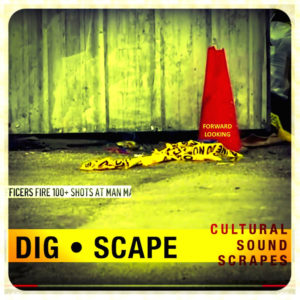
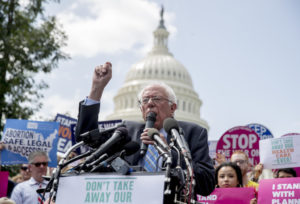

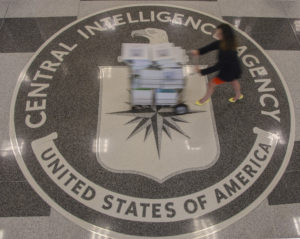
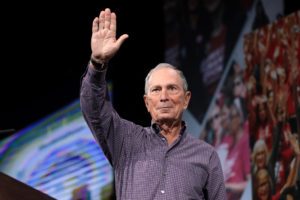
You need to be a supporter to comment.
There are currently no responses to this article.
Be the first to respond.